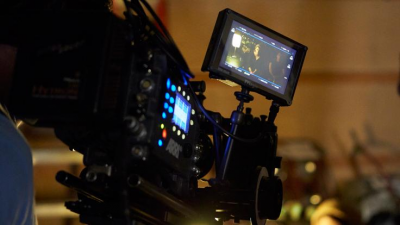Screenwriting

This course is an overview of selecting and developing story concepts, developing an outline and writing a short film screenplay. Emphasis is placed on proper screenplay formatting, character development, effective use of conflict and adherence to three act structure. The cornerstone for this class is the “writer’s workshop.” Each week, writers’ work will be read and given constructive analysis to help each writer reach a solid short script screenplay that showcases his or her unique voice.
Course Information
Course Objectives
The purpose of the course is to learn about film and television screenplay structure, analyze dramatic strategies in film and television, learn and apply correct script form, and creatively engage in the various stages of original scriptwriting. The assignments will include the writing of scenes, a treatment and a half-hour script, with special emphasis on the steps leading toward creating a final screenplay.
Screenwriting has as a prerequisite a course in media aesthetics or film history; acting experience; or video production experience. Students who have done television or video production through journalism or cable access will also be familiar with the technical terms needed to write screenplays. The course places an emphasis on analyzing dramatic structure and visualizing dramatic elements. Such an emphasis is important since anyone working in a creative or executive capacity in the media industry needs to know immediately what good dramatic material is and how best to present it in audio and visual terms. Your screenwriting will carefully present expressive visual elements.
Course Outline
- Course Introduction and Overview:
- A casual conversation of what makes a good story.
- A discussion of movies we love and why they resonate with us.
- Protagonist- Action-Conflict-Climax-Resolution
- Protagonist – Goal and Obstacles = Conflict
- What is a story and why are we drawn to them?
- The essence of dramatic structure:
- What is a screenplay?
- Characters, setting, story, scenes, and theme
- Premise and the central conflict
- Story Structure – Set up, Rising Action and Resolution.
- Character Development
- Characters and the Journey of the Protagonist
- What is a character?
- How do films introduce characters? Wants and Needs
- Character Arcs
- Critical to knowing WHAT your film is about
- Scene Construction and Conflict
- Scene construction: What makes a good scene?
- Objectives, needs, scene protagonist, scene antagonist, conflict, etc.
- Dialogue – how do they try to get what they want?
- Setting and Mood
- Conversation about Setting
- Work on the First Draft of your Screenplay
- Short Film Screenings and Structural Analysis
- Genre and Tone
Methodology
By the end of this course you will have a fundamental understanding of the structure of a typical Three-Act screenplay.
You will also be introduced to visual storytelling through the screenplay form and will see how key incidents, story progressions, conflict and resolution and character arcs affect a film.
Ultimately you will utilize these concepts to complete an 8-10 page screenplay for a short film.
